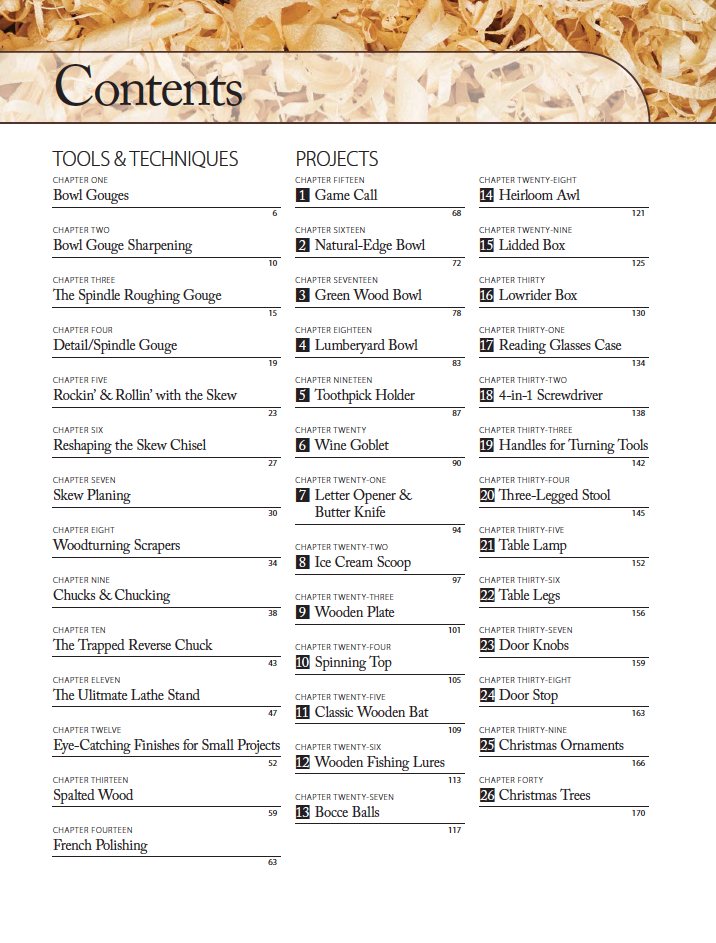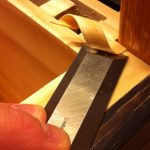We may receive a commission when you use our affiliate links. However, this does not impact our recommendations.
Alan Lacer has been involved in the field of woodturning for almost four decades. He’s done almost anything and everything you can think involving the craft from turning to teaching to writing, and is a past president of the American Association of Woodturners. His latest book, “Alan Lacer’s Woodturning Projects & Techniques” is a collection of his writings for American Woodworker Magazine, presenting 15 years worth of his articles in one volume. In the following interview, Lacer discusses some favorite projects and turning tools, his new book and some of his musings about the art of woodturning.
 What are your thoughts in looking back on your work for American Woodworker now that it’s available in one complete collection?
What are your thoughts in looking back on your work for American Woodworker now that it’s available in one complete collection?
There were connections between articles that were not evident when spread across 15 years. The technique articles often related to projects articles; some projects built upon previous projects; some techniques were a continuation of previous technique articles, such as those on the skew chisel. This book is an excellent vehicle to tie many of the articles into a coherent work. And, when taken together, reflect my interests and approaches to teaching and understanding woodturning.
From a philosophical standpoint, what sets turning apart from other ways of working with wood?
Actually there are many:
- It is the only machine where you hold onto the cutter, hence, there is no spinning cutter. This opens it up to pleasure in the process (and it can be rather quiet for a machine). Essentially, you are doing handwork on a machine – very rare indeed.
- You get something finished. I believe there are many pieces of furniture, cabinets, carving, etc. that are left unfinished – and I don’t mean without lacquer. With the lathe we can complete some projects in literally minutes. Even some large projects such as a four-poster bed (the turned parts of course) can be completed in relatively short time with only modest skill.
- Something exists that I call “the woodturner’s edge.” If you make something and you don’t like it or ruin it, [you can] make another – usually in a relatively short amount of time – and improve upon it. Seldom does the turner have the financial, emotional or time investments in a turned piece that you might have in furniture or an involved turning. As a matter of fact, to really learn turning, make a number of the objects you are really drawn to with the goal of refinement.
- Another aspect of turning is that we can learn to use local, non-kiln dried wood right from the log. This is especially true of bowl turning which is quite popular at this point in time. This involves learning to process wood from the log, handling green wood and methods for drying without checking. This is about as fundamental woodworking as it gets.
- Turners use virtually every species of wood and every part of the tree. I cannot think of any wood a turner has not tried, and this includes shrubs, vines and palms. We can turn green wood right from the log, burls, roots, forks, limbs (even quite small ones), rotting wood, insect-eaten wood, wood stained by minerals or metal, some nuts and even the bark.
 You cover a lot of different turning tools in the front section of the book. What tool do you think is the most misunderstood or underutilized and why?
You cover a lot of different turning tools in the front section of the book. What tool do you think is the most misunderstood or underutilized and why?
Without question it is the skew chisel. It is not a tool you just stick into the wood to see what it does. It is famous for wrecking the work – and your nerves. There is much avoidance of the tool from fear or bad experiences. [But] it is an amazing tool once you learn its habits and how to use it – both take intelligent practice with each of the dozen or so cuts it makes for long-grain turning. It is not a tool for face-grain bowl work! There is no real history of that use in traditional turning, and this may explain some of the rough experiences. And, of course, it is poor at any hollowing operations, although it can be used for coving in long-grain turning (but a detail gouge is still superior in many way for such work). I teach classes from one to five days where you are not allowed to use any other tool. Most overcome their fears, get some of the cuts down quite well and experience its strong points.
Your projects include everything from furniture to kitchen items to sporting equipment like fishing lures, baseball bats and bocce balls. What do you find yourself making the most when you’re in the shop? Is there something you always return to or find the most satisfying?
It would have to be the turned wooden box. The variety is endless and poorly explored by contemporary turners. It can be all about fussy tolerances and the challenge of hollowing end grain cleanly, but can be quite delightful when executed well. In considering just the variety of fits there is much to explore: suction fits, snap fits, threaded fits (especially hand-chased threads) and locking lids. And boxes are well suited to embellishments of inlay, carving and coloring techniques.
What do you think any woodworker can learn from delving more deeply into woodturning?
Experiencing the joy in the process of working spinning wood. With some solid learning, time on the lathe and confidence, you discover [turning] has strong therapeutic and relaxation qualities. And the breadth and depth of the hundreds if not thousands of different objects the turner can create makes for a wide and deep field to explore.
It is also one of the best ways to experience different woods and their properties. Every wood turns, smells, feels and looks differently; turning is the perfect place for those who love this incredible material.
“Alan Lacer’s Woodturning Projects & Techniques” is available for pre-order in paperback and available now as an eBook at ShopWoodworking.com (see below for a complete Table of Contents for the book).
Here are some supplies and tools we find essential in our everyday work around the shop. We may receive a commission from sales referred by our links; however, we have carefully selected these products for their usefulness and quality.









